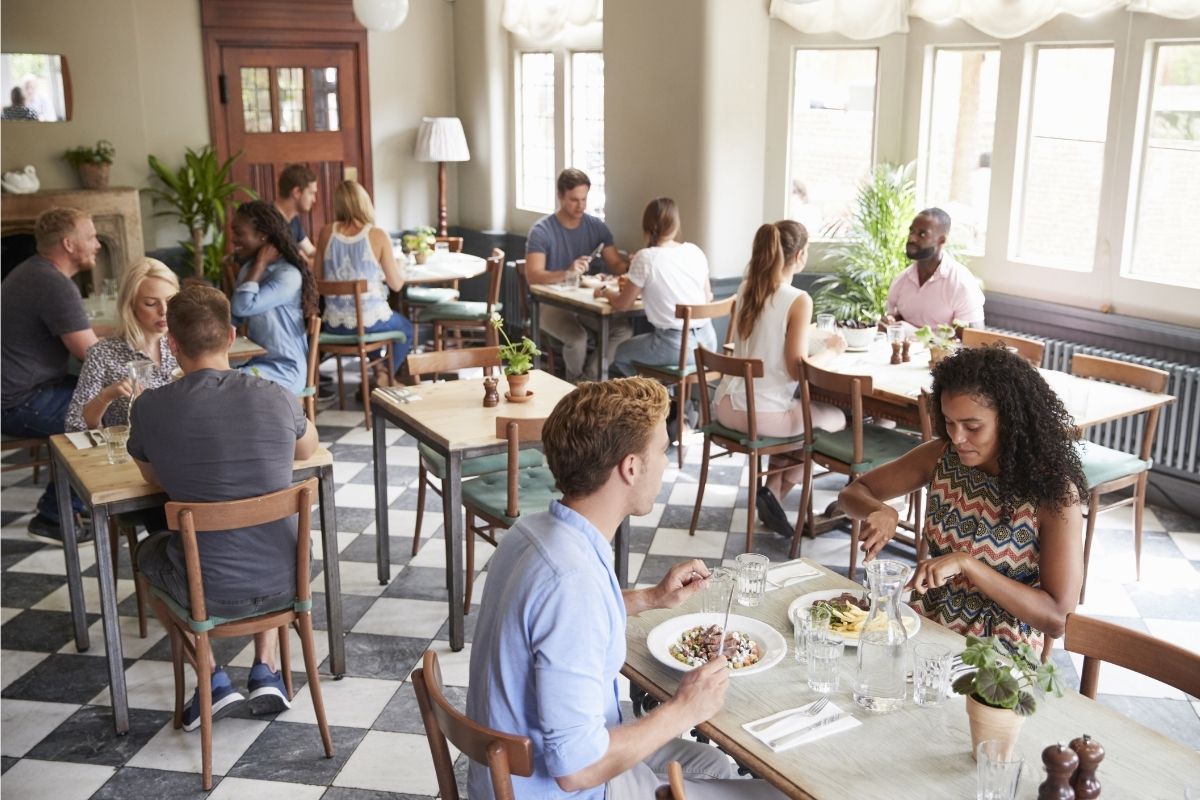Our sense of smell has been a powerful motivator throughout human history. This natural olfactory instinct can drive the decisions we make - whether they’re good, bad or indifferent. So, when it comes to restaurants and kitchens, help ensure customers only get the very best of the smells in your building.
Make sure external environmental odors are managed effectively
External environmental odors are inescapable. Whether it’s treatment plans, traffic, commercial-sized trash bins, farms, even construction sites – everything gives off odors that impact air quality. For restaurants, keeping those external odors out is critical to bringing customers in.
For restaurants that aren’t managing their HVAC system pressurizations correctly, this could spell lost business if those external environmental odors leak inside.
“There are a variety of causes to unpleasant odors seeping into a building,” said Greg DuChane, Trane Restaurant Vertical market leader and engineer. “As with any odor issue, you’ve got to first identify the source. Is it plumbing vent lines installed too close to the air in-take? Is your building under negative pressure and you’re pulling un-managed air (think fumes) from doors and windows?”
“We’ve dealt with situations where sewer gas smells were an issue. Every restaurant can have unique situations and there are a variety of solutions that can solve most any issue with odors.”
Once the source of external odors is identified, it’s best to talk with a licensed, experienced technician to determine the best solution and most importantly, ensure the building pressures are balanced correctly. There are a variety of cleaning technologies recently tested by Trane that can be used to address odors:
Avoid letting customers take kitchen odors home
Getting the right indoor smells to customers is important, but sometimes undesired kitchen smells get out, leaving customers smelling like the kitchen even after they’ve left your establishment.
What causes this? Frequently it’s an issue with air not migrating to kitchen hoods.
“In some cases, latent air from the kitchen will seep into the dining room usually because the air isn’t migrating to the kitchen hoods. This is frequently caused by building pressurization issues,” DuChane said. “For instance, the kitchen should be in a negative pressure versus the dining room. And the whole building should be in a positive pressure compared to outside. Think of it like an air balloon inside an air balloon.”
Getting a technician to help adjust outside air, balance the pressure and ensure the right cleaning technology is applied will be key to resolving all odor issues.
Why it pays to get the right smells to your dining room
It’s not unusual for people to allow food smells to drive their decisions. It’s common sense - bad smells can drive customers away, or even cause them to question whether a kitchen and dining room are clean. Research1 shows just one bad review of a restaurant is frequently shared with about 9-15 people, driving a greater cost to hosting the wrong odors. Don’t let odors be one more factor to impeding business. Our experts understand the unique applications for restaurants and kitchens and can help with any odor issues.
Additional reads:
- Keep Your Patrons Coming Back
- Creating a Cleaner Environment for Dining Experiences
- Creating Comfort Through Humidity Control
- Bring the Outdoors in with Optimized Ventilation
- Benefits of Scent Marketing for Restaurants | CAKE (trycake.com)
1“96% of unhappy customers won’t complain to you, but will tell 15 friends [infographic],” Andy Beal, accessed July 12, 2021, https://www.andybeal.com/96-of-unhappy-customers-wont-complain-to-you-but-will-tell-15-friends-infographic/.
This is for informational purposes only and does not constitute professional advice. Trane Technologies believes the facts and suggestions presented here to be accurate. However, final design and application decisions are your responsibility. Trane Technologies disclaims any responsibility for actions taken on the material presented.

































































































